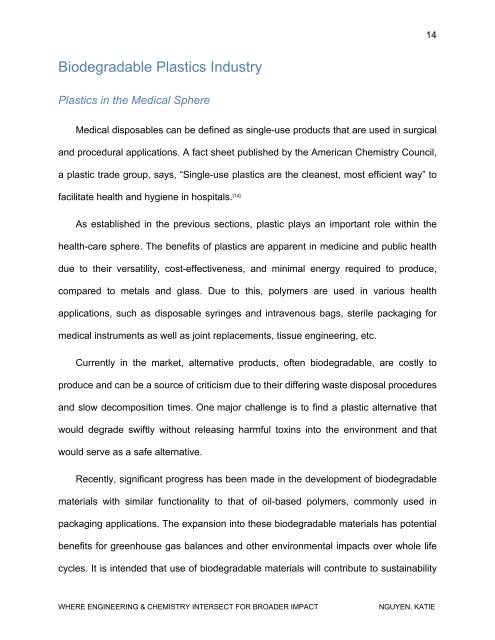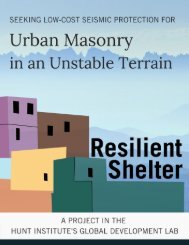Where Engineering & Chemistry Intersect for Broader Impact
Currently, many biodegradable products in the market are bio-based, such as polysaccharides, proteins, and lipids, and are focused on conventional plastic applications. This approach to production of biodegradable plastics, however, is facing mounting challenges due to high cost, weaker performance, and environmental issues. In addition, several biodegradable plastics have proven to break down quickly under specific, simulated environmental conditions, but they may not be effectively degradable under natural conditions. As a result of these challenges and many more, there exists a gap in the market. Our Project Affiliates, Dr. Son and Dr. Krueger, aim to bridge this gap by pursuing a biodegradable plastic that better addresses the aforementioned challenges, investigating a prototype plastic with predictable degradation and mechanical properties. In the spirit of interdisciplinary innovation, they seek to develop a joint chemical and engineering approach to biodegradable plastics for broader impact.
Currently, many biodegradable products in the market are bio-based, such as polysaccharides, proteins, and lipids, and are focused on conventional plastic applications. This approach to production of biodegradable plastics, however, is facing mounting challenges due to high cost, weaker performance, and environmental issues. In addition, several biodegradable plastics have proven to break down quickly under specific, simulated environmental conditions, but they may not be effectively degradable under natural conditions. As a result of these challenges and many more, there exists a gap in the market.
Our Project Affiliates, Dr. Son and Dr. Krueger, aim to bridge this gap by pursuing a biodegradable plastic that better addresses the aforementioned challenges, investigating a prototype plastic with predictable degradation and mechanical properties. In the spirit of interdisciplinary innovation, they seek to develop a joint chemical and engineering approach to biodegradable plastics for broader impact.
You also want an ePaper? Increase the reach of your titles
YUMPU automatically turns print PDFs into web optimized ePapers that Google loves.
14<br />
Biodegradable Plastics Industry<br />
Plastics in the Medical Sphere<br />
Medical disposables can be defined as single-use products that are used in surgical<br />
and procedural applications. A fact sheet published by the American <strong>Chemistry</strong> Council,<br />
a plastic trade group, says, “Single-use plastics are the cleanest, most efficient way” to<br />
facilitate health and hygiene in hospitals. [14]<br />
As established in the previous sections, plastic plays an important role within the<br />
health-care sphere. The benefits of plastics are apparent in medicine and public health<br />
due to their versatility, cost-effectiveness, and minimal energy required to produce,<br />
compared to metals and glass. Due to this, polymers are used in various health<br />
applications, such as disposable syringes and intravenous bags, sterile packaging <strong>for</strong><br />
medical instruments as well as joint replacements, tissue engineering, etc.<br />
Currently in the market, alternative products, often biodegradable, are costly to<br />
produce and can be a source of criticism due to their differing waste disposal procedures<br />
and slow decomposition times. One major challenge is to find a plastic alternative that<br />
would degrade swiftly without releasing harmful toxins into the environment and that<br />
would serve as a safe alternative.<br />
Recently, significant progress has been made in the development of biodegradable<br />
materials with similar functionality to that of oil-based polymers, commonly used in<br />
packaging applications. The expansion into these biodegradable materials has potential<br />
benefits <strong>for</strong> greenhouse gas balances and other environmental impacts over whole life<br />
cycles. It is intended that use of biodegradable materials will contribute to sustainability<br />
WHERE ENGINEERING & CHEMISTRY INTERSECT FOR BROADER IMPACT<br />
NGUYEN, KATIE













